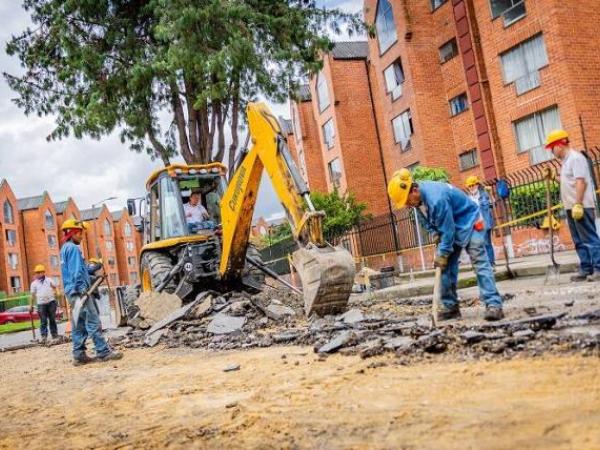The announcement of the intention of Conconcreto to leave the business with Vinci Highways (to cede its participation in the Vía 40 Express concession, which carries out the Fourth Generation Third Lane Bogotá – Girardot project), triggered alerts about possible similar impacts on other infrastructure project players as a result of the macroeconomic situation of the country.
(Read: Damaged tertiary roads raise transport costs by up to 30%).
The firm argued that its decision, although it will affect its financial statements, on the other hand will mitigate the impact that inflation, interest rates and the devaluation of the peso would have on your margin of profit of the project and, in addition, it could have other implications in the future.
And it is that the rise in prices continues to increasingly affect the infrastructure sector. According to the Dane Civil Works Construction Cost Index (Icociv), cut to October lThe costs of civil works already accumulated a year-to-date increase of 9.41%, which means that this item is growing 1.9 times more than a year ago, when the figure stood at 4.94%.
For highway activity, the annual variation reached 9.68%, contributing 4.65 percentage points to the variation of the basket. Among construction materials, the rise in cement stands out, which reached an annual rise of 16.3%, pipes and sewerage (37.5%), steel (14.8%), asphalt (29 61%), steel pipes (46.1%) and glass (18.8%).
This situation is not alien to other builders, who are also feeling the adverse effects of the challenging macroeconomic situation.
According to a document known by Portafolio, from the Colombian Chamber of Infrastructure (CCI), in the case of projects under construction developed by public works, changes in input prices have a direct impact on the physical progress of the works.
“As a consequence of the foregoing, the employer must face a new reality in contractual management, due to the fact that there is a new difference between the prices at the time the input is quoted and when it is actually acquired.”, indicates.
On highways under concession that are under construction, as is the case of the Bogotá – Girardot Third Rail project, the volatility of input prices and their increases, must be assumed by companies.
“The construction risk, specifically, the criterion of cost overruns, falls exclusively on the concession. Thus, at the time of carrying out the classification around this criterion, it is likely that economic situations with pronounced variations in the prices of inputs were not foreseen, as is currently the case.”, remarks the document of the Chamber of Infrastructure, based on a survey of different entities.
As a result, the builders they have had to request new credits to fulfill their contractual responsibility. “The construction companies participating in the study state that, in order to comply with the signed contracts and ensure the completion of the works, more capital has been required than the estimate in the structuring stage,” the report indicates.
This situation is in the focus of the union, which also ensures that prices cause distortions in project planning. A company from his union even indicated that the costs of their projects increased by about 10%.
However, the injection of more capital is not the only concern, because the high interest rates, which affect financing, also add more weight to the cost basket of the firms.
(Keep reading: Execution of 4G roads in the country will be 85%, according to CCI).
“These directly impact financial leverage and make the cost of projects more expensive, since expenses such as debt service increase. Thus, the financial estimates that are made at the beginning of the projects are affected”remarked the union leader Juan Martín Caicedo.
In conclusion, the construction companies that have managed to stay afloat find themselves in a sea of uncertainty about a challenging macroeconomic situation in 2023, which would jeopardize their role in infrastructure projects.
Increase in the minimum wage adds to the challenges
At the crossroads before a scenario in 2023, where interest rates do not seem to budge, in addition With an estimated inflation of 7%, the concern of the business community for the fulfillment of the salary payment is added of its base workers, which will have an increase of 16%. As of October, the cost of labor had an increase of 5.6%.
Among the trades with the highest salary increases is that of a construction watchman, with an annual growth of 12.8%, followed by assistant (9.85%), bouncer (9.26%), driver (9.13%), the assistant (6.54%), the topographic commission staff (6.13%), the welder (5.28%), the official (5.23%), the professional (4 7%), the teacher (2.9%) and the foreman (2.46%).
Paula Galeano Balaguera
[email protected]
















